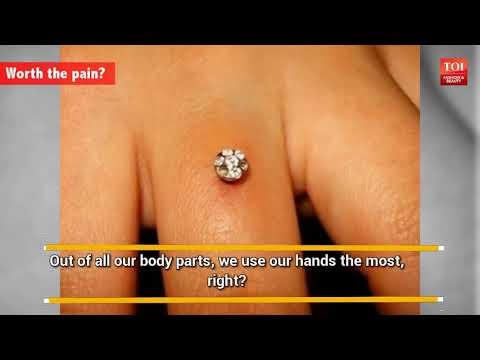What you need to know about HPV and why everyone should test it
Human Papillomavirus (HPV) is an extremely common infection, sexually transmitted: 80% to 90% of women experience HPV infection in their lifetime. The peculiarity of the virus is that for many years it may not manifest itself at all, but ultimately lead to the development of diseases of the genital organs, both benign, for example, papillomas, and malignant (among them, cervical cancer).
According to the latest data from the International Agency for Research on Cancer, the incidence of cervical cancer in Russia is 15.9 per 100 thousand people: this is higher than in the European Union, where the figure is 9.6, and in the United States (a total of 6.6 per 100 thousand people). Daily in Russia, 17 women die from cervical cancer. Due to the prevalence of the virus and the seriousness of the risks associated with it, we decided to find out what you need to know about HPV in order to protect yourself. What is the human papillomavirus, when it’s time to take an analysis, why you shouldn’t panic, if you have HPV, and why you need vaccination - we are looking for answers together with the gynecologist, candidate of medical sciences Tatiana Rumyantseva.

What is HPV?
Human papillomavirus (or human papillomavirus) infects epithelial cells and transforms them: the cells begin to divide, resulting in papilloma (lat. Papilla - "nipple" and gr. Oma - "tumor"). The term "papilloma" refers to a group of diseases, the main external manifestation of which is papillary growths protruding above the surface of the epithelium. Intensive reproduction of HPV occurs in the surface layers of the epidermis.
More than 100 types of human papillomavirus are known. Types are peculiar "subspecies" of the virus, they are denoted by numbers that were assigned to them as they were discovered. There are a total of 14 types of high oncogenic risk: 16, 18, 31, 33, 35, 39, 45, 51, 52, 56, 58, 59, 66, 68. These types of virus are associated with the development of cervical cancer. Men infected with some of them, namely type 16, 18, 31, 33, 56, 66 or 70, are at increased risk of developing genital cancer. There are types of low oncogenic risk (mainly 6 and 11): they lead to the formation of 90% of all anogenital warts - genital warts and papillomas - in men and women, and also cause respiratory papillomatosis caused by the formation of benign tumors in the respiratory tract.
Papillomas, triggered by different types of HPV, are found on the skin, mucous membranes of the mouth, nose, paranasal sinuses, pharynx, vocal cords, renal pelvis, ureters, bladder and genitals. Clinical manifestations of human papillomavirus infection depend on localization: if the skin papillomas of the face and neck cause mainly a cosmetic defect, the laryngeal papillomas can lead to hoarseness of the voice, respiratory failure, and ureter papilloma due to its narrowing. As for the formations in the genital area, which are mainly discussed, they rarely become malignant, but lead to significant cosmetic defects.
How big is the possibility of infection
Human papillomavirus is transmitted mainly through sexual intercourse — oral-genital and anal. In 2003, a group of epidemiologists from the University of Washington conducted a large-scale study of HPV risk factors among female students at American universities and found that most types of the virus are ingested by women in the first years of sexual activity: 40% of the patients became infected with HPV within two years after the first sexual contact. Sooner or later, almost all men and women become infected with the papillomavirus: up to 90% of us will experience a cervical-vaginal infection in our lifetime.
But there is good news. Scientists from the epidemiology department of the A. Einstein College of Medicine in the Bronx found out that the majority of infected women (about 91%) get rid of HPV without any medical interventions within two years. This is exactly how much the natural development of infection, caused by most types of HPV, takes, and two years is enough for a person’s immune system to completely get rid of the virus.
So, if some time ago you had HPV, and now it is not, it is absolutely normal. It should be borne in mind that the immune system of different people works with different "speed". In this regard, the time to get rid of HPV can be different for sexual partners, and a situation is possible when one of the partners has HPV detected and the other does not. Immunity after infection is not formed, so it is possible to re-infection - as the same virus that has already been in contact, and other types.
In women, the risk of HPV decreases with age, and in men it remains virtually unchanged throughout life.
As shown by a study of an international group of scientists conducted in 2009 in Spain, the risk of transmitting high-risk HPV during pregnancy and during birth is relatively low (less than 2%), and even these indicators should not be misunderstood. Much of what is in the vagina and cervix enters the child’s body, but this does not mean that a full-fledged infection occurs with a subsequent infectious process. In addition, in the mentioned study, HPV-positive children were also born from HPV-negative mothers, so the question requires further study.
As for men, the presence of a virus of one type or another, according to various statistics, ranges from 30 to 70% (as we can see, the indicators are "floating"), and as part of a large-scale study conducted among men aged 18 to 70 years in the USA, Mexico and Brazil, half of them had HPV. Often, an HPV-infected man is a reservoir of infection and contributes to a higher risk of transmitting the virus to a woman. To leave a man's body, the virus needs more time, and the longest HPV is delayed in men aged 18 to 30 years. Scientists attribute this to the characteristics of the sexual behavior of men (with partners of both female and male). By the way, if women are at lower risk of HPV with age, then men remain almost unchanged throughout their lives.

What is dangerous HPV
High-risk HPV is dangerous in that it can cause cervical cancer and some other cancers that affect the rectum, vagina, and penis, but does not cause other high-risk HPV problems. Human papillomavirus, as a rule, does not lead to menstrual disorders or infertility. During pregnancy, due to hormonal changes in the body of a woman, the growth of anogenital warts can accelerate, but the presence of the HPV virus does not affect the ability to conceive or bear a fetus.
The relationship of HPV and cervical cancer is no longer doubtful: in 99.7% of cases of cervical cancer in patients, one of the types of HPV is found. Two types of HPV are the most dangerous: 16 and 18 types provoke 70% of cases of cervical cancer and precancerous lesions. Cervical cancer develops only when the virus manages to stay in the body for a long time. In healthy women, the virus will require 15–20 years in the body to develop cervical cancer. The process can proceed faster (in 5-10 years) in women with impaired immune systems. Speaking about the risk group with such disorders, we mean, for example, HIV-infected women, and not patients with a so-called weakened immune system.
From the state of the norm to cancer, several stages must pass through which can be treated. Intermediate stages are called dysplasia, or cervical intraepithelial neoplasia (new term). It is possible to detect these changes during cytological examination (ideally with the help of the above mentioned liquid Pap-test). If cervical intraepithelial neoplasia and HPV are detected, treatment is recommended, which is a procedure for removing the affected area — more often with a radiobender — followed by a histological examination. After successful treatment in 95% of cases, HPV is not detected, which is a kind of signal for a properly performed surgery.
In what situations is it worth testing for HPV?
If you are going to take a test for high-risk HPV under 25 years old, you should bear in mind that at this time there is a very high probability of detecting a virus that will soon disappear from the body itself. For this reason, even US laboratories, where the question of HPV is taken very seriously, are recommended to be tested after 25 years. In this case, young girls under 18 years old who are already sexually active, gynecologists still recommend to be checked for HPV.
Some doctors state that it makes sense for women over the age of 25–30 to take an analysis together with a cytological examination (Pap test). True, the US Food and Drug Administration (FDA) recommends doing without it during the initial analysis of HPV, including "high risk" types. If a high-risk HPV is detected and the Pap test shows changes at the cellular level, this situation requires special attention. Also, HPV testing is needed after treating cervical intraepithelial neoplasia, precancerous conditions, or cervical cancer.
Often the virus leaves the body on its own, but control is still necessary.
Today, there is no analysis for HPV recommended for men. The only proven method of analysis is the screening of women for cervical cancer, that is, testing of all women at risk, most of whom do not show symptoms. Such tests do not work to detect cancer associated with HPV, or genital papillomas and warts in men. Screening of anal cancer is also not recommended for men: more research is needed to determine its effectiveness in preventing the development of the disease. Nevertheless, some experts recommend annual screening as anal Pap-tests for men who practice homosexual contact, as well as for HIV-positive men, because, according to statistics, among these groups, cases of anal cancer are more common.

Can HPV be cured
At the moment there is no effective treatment aimed at the destruction of the papilloma virus in the human body. World medicine leads many arguments in favor of the use of immunomodulators in the case of treatment of manifestations of HPV - flat papillomas and genital warts, as well as HPV-associated cancer. However, it is worth distinguishing it from attempts to combat the virus itself: many domestic immunostimulants and immunomodulators assigned in Russia for these purposes are not known in other countries. There are also preparations that are produced abroad, but are used only in Russia and a number of other CIS countries. In addition, such methods of treatment are not in the guidelines of the World Health Organization, and their effectiveness is called into question by Russian doctors.
But the treatment of conditions caused by HPV - both papillomas, and the mentioned neoplasia, precancer, or cervical cancer - may have to be carried out using surgical methods: using a laser, radio knife, liquid nitrogen (cryodestruction), or a weak electric current (diathermocoagulation) . The tactics of treating cervical lesions are determined by the results of colposcopy and biopsy and, if atypical cells are detected (neoplasia), a larger area is removed with the capture of normal tissues in order to avoid the risk of their damage. Benign condylomas and papillomas with other localization (for example, on the external genital organs) should be removed not only for cosmetic reasons, but also in order to reduce the risk of infection of a partner or partners.
If there are no complaints, papillomas or changes in the cervix, and the Pap-test data doesn’t cause questions in a patient who has HPV, no medical procedures are needed - you only need to take the test once a year and monitor the condition of the cervix. Often the virus leaves the body independently. Even if the virus does not disappear, this does not mean that it will certainly lead to the development of neoplasia or cervical cancer, but control is still necessary. Treatment of sexual partners is not required, except in cases where both partners have genital papillomas. As for prevention, condoms help them (although they do not provide one hundred percent protection), and a more reliable method is vaccination.
How is HPV vaccination in the world and in Russia
Today there are vaccines that protect against 16 and 18 types of HPV, one of them also protects against 6 and 11 types. Types 16 and 18 are responsible for 70% of cervical cancers, so protection from them is especially important. Boston gynecologists, medical candidates Cary P. Braaten and Mark R. Laufer point out the need for vaccination and state the following: Considering that most of us are infected with HPV at the first sexual contact, the ideal time for vaccination is before the onset of sexual activity.
The society is developing, and the youth is becoming more liberated. According to the survey, 7.4% of American adolescents had sex before the age of 13, and before graduation more than 60% of young people live sexually, and 20.3% of adolescents confirm that by this time they already had more than four partners. Approving the use of the Gardasil vaccine in the United States in June 2006, the FDA recommended them for girls and women aged 9 to 26 years.
It is calculated that widespread vaccination and regular screening every three years will reduce cervical cancer mortality by 94%. Routine vaccination is used in more than 55 countries, including the United States, Canada, Australia, France, Germany, Switzerland, and Norway. Unfortunately, Russia is not yet among them. In fairness, we note that since 2008, several regional HPV vaccination programs have been implemented, in particular in St. Petersburg, the Moscow and Smolensk regions, and the Khanty-Mansi Autonomous Area. Two vaccines have been registered in Russia: the mentioned four-valent "Gardasil" (protects against four types of HPV) and the bivalent "Cervarix" (protects against two types), while none of the drugs are purchased by the state centrally, since the vaccine against HPV is still not included to the national vaccination calendar.
Photo: © bestphotostudio - stock.adobe.com., Popova Olga - stock.adobe.com., Xveron90x - stock.adobe.com.





